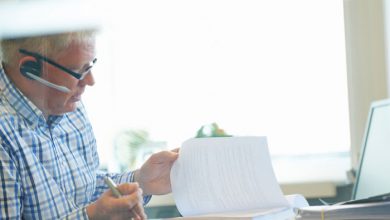
Many companies today are transitioning from standard 2D drafting to 3D modeling. Companies are doing this for many reasons. Some see the marketability, others do it to improve design efficiencies. However, the main reason is to stay competitive.
While some companies have available manpower, financial support, and resources to support this change, most smaller businesses don’t have that luxury. Making this transition can be expensive, stressful, and challenging. But if you have a plan and understand a little of what the process will entail, it will make things a little easier. I’m going to take you through some tips and ideas for smaller businesses to make this transition as smooth as possible.
In Part 1, we talked about doing the research to find out what’s most effective for your workflow. In Part 2, let’s look at how to gain the necessary approvals.
Contents
Company Board or Owners
Once you’ve done all your research and created a game plan, you have to win approval, understanding, and backing from ownership. There will be additional money, resources, and support they’ll have to provide. There will be people that push back and don’t want to change, and without ownership support things will fail.
Fortunately for me, the President of Commonwealth Engineers was the one pushing this endeavor, so I didn’t have to seek out his approval. However, when ownership starts receiving the costs for new software, additional hardware requirements, estimated time required, and the rest, you must be ready to justify it. We had meetings in which I explained step-by-step how and why we were going to implement this process. Ownership understood the why – but didn’t understand all the steps involved.
For us, one of the biggest challenges were getting the engineering staff on board. Implementing 3D modeling requires a complete change in mindset, workflow, process, and takes time away from traditional 2D drafting. There were engineers that were pushing back who didn’t understand the whys, and didn’t like the process change – and who would voice their concerns to ownership. We all know that owners don’t want to spend their time arguing over things like this, so it’s imperative to keep your owners involved and updated on how things are going.
Training
Set up a basic training class through your reseller or another training company and learn the basics of the software. This brings down the ramping up time required.
Pilot Project
Once training is complete, come back to the office and do a pilot project. I took a recent 2D design that was just starting construction and turned it into a 3D design. This allowed me to lay out the full design on something that wasn’t under deadline. This pilot project paid for the training and software by finding construction issues prior to change orders from the contractor.
Note: This is where having your “ducks in a row” comes in handy. Having the right user, right project, and right timing all comes from your planning process. We were able to take a project we had just finished drafting that had a year-long construction time frame. Fortunately, we had a healthy budget that allowed me to “spend” some billable and overhead time. For Commonwealth, I did the pilot project myself instead of giving it to a colleague because I knew there were going to be growing pains. The most eye-opening part of this process was finding a piping conflict that we were then able to correct prior to the contractor finding and issuing a change order. As the issue was on large diameter piping and needed additional fittings, the cost of the additional 3D software more than paid for itself just by me finding that conflict.
Full Design
Once you’ve had training and completed a pilot project, you should be ready to implement full design. Wait until the right project (read: with a favorable time frame and budget) comes along; hopefully this will lessen the pressure and stress.
Your first step now is to sit with the entire design team. At Commonwealth, our engineers and staff were accustomed to doing projects a certain way and our workflows were the same for each project. Switching to 3D changed the entire process. Engineers had to understand that they either needed to give us everything upfront, or they needed to let us create the model based on project scope. This made our CAD users more like designers instead of just CAD drafters.
One way to frame this is to focus on skills growth with your colleagues. I have some that had 15+ years of experience doing 2D AutoCAD drafting. Now they’ve expanded their roles and knowledge, which is great for their career. The potential downside for you is that you may find out (really quickly) that some of your staff is unable to handle this change, and, unfortunately for managers, this may create other issues. You may have to ask yourself if you have the right staff to not only successfully implement this process, but sustain it moving forward.
Check out Part 3 now!
Source: Autodesk








